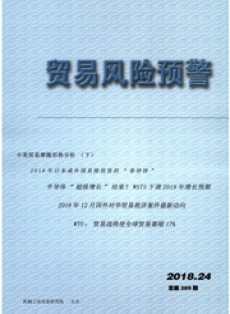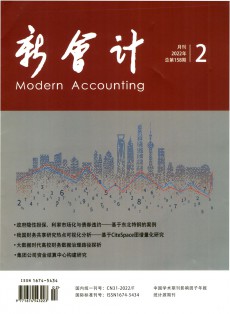风险管理的特征范文
发布时间:2023-09-28 10:31:43
导语:想要提升您的写作水平,创作出令人难忘的文章?我们精心为您整理的5篇风险管理的特征范例,将为您的写作提供有力的支持和灵感!

篇1
风险理论把风险分为纯粹风险和投机风险。纯粹风险是指只有损失机会而无获利机会的风险,如火灾、地震等。其后果只有两种可能,即有损失或无损失。投机风险是指既有损失机会又有获利机会的风险,其后果有三种可能:盈利、损失、不盈不亏,如股票投资、经营活动中存在的风险。投机风险因有利可图而具有程度不同的吸引力,使人们为求得利益而甘冒风险。
1 技术创新风险属于投机风险。创新主体希望通过成功的技术创新获取期望的利益。但是技术创新系统在外部因素和内部因素的作用下,创新活动最终有三种可能的结果:一是创新成功,实现了预期的目标;二是创新失败,未能实现预期目标,甚至无法回收前期投入的资金;三是技术创新没有达到理想的效果,仅使投入与收益基本持平。所以在风险类型上,技术创新风险属于投机风险。
2 技术创新风险是一种动态风险,有其复杂性。即由技术创新系统的外部因素或内部因素的变动,如经济、社会、技术、政策、市场等因素的变动,研究开发、市场调研、市场营销等方面的管理不到位,均可能导致风险的发生。而所谓的静态风险是指由于自然力的非常变动或人类行为的错误导致损失发生的风险,如地震、火灾等。
3 技术创新风险在某种程度上是可以防范和控制的。技术创新活动是一种有目的、有组织的技术经济活动。通过对技术创新系统的组织管理,尤其是树立风险意识,完善风险管理,则能够在一定程度上防范和控制风险损失的发生和发展,使受控的技术创新活动向预期目标发展。
4 技术创新风险导致的失败结果在某些条件下是可以改变的。例如,电视机、电子表在美国公司经历失败之后,却在日本企业手中经过完善和市场开拓,最终获得了成功。事实上,影响技术创新的风险因素有一些是可以控制的。在改变某些可控因素之后,能够改变原来失败的结果。
5 技术创新风险是可管理风险。虽然技术创新风险不可能完全灭除,但总的来说,技术创新管理比较完善的创新主体,能够有效地防范和控制某些风险因素,其技术创新成功的可能性相对就会高一些。因此,要取得技术创新的成功,必须在完善技术创新管理的同时,还要加强技术创新的风险管理。美国著名管理学家彼德·杜拉克说过:许许多多成功的创新者和企业家,他们之中没有一个有‘冒险癖’。……,他们之所以成功,恰恰是因为他们能确定有什么风险并把风险限制在一定范围内,恰恰是因为他们能系统地分析创新机会的来源,然后准确地找出机会在哪里并加以利用,他们不是专注风险,而是专注机会。”
2 技术创新风险是一个理性过程中的风险
在技术创新这一具有创造性的过程中,必然会受到许多可变因素以及事先难以估测的不确定性因素的作用和影响。这些因素的影响使技术创新的结果具有不确定性。但技术创新过程是创新主体理性行为主导的过程,并不是人们所想象或认为的那样是一个不确定性很强的随机过程。因为,在技术创新过程中所有的工作都是有目的、有组织地进行的,其中每个阶段都包含有分析、评价、决策和实施等符合逻辑的理性行为。创新设想调研开发中试生产市场销售技术创新过程的技术创新风险分析矩阵〔3〕表明,在技术创新整个过程中的各个阶段,均可能存在技术风险、资金风险、市场风险、管理风险、决策风险、政策风险,或者说不同特征的风险,如技术、市场、管理、决策等风险,在创新过程的不同阶段具有不同的分布,其发生变化的规律存在显著的差别。技术创新风险分析矩阵技术风险市场风险财务风险生产风险管理风险政策风险创新设想调研评估研究开发中间试验批量生产市场销售创新主体需对这些可能存在的风险因素进行事前、事中分析。一方面可以采取风险管理措施,使风险处于受监测状态,防范风险,降低风险可能造成的损失。另一方面,可以通过完善的技术创新管理,如进行市场调查研究,对创新设想进行评估,切实按照目标顾客的需求和企业发展战略的要求开发新产品,制定和实施有效的市场营销策略,使技术创新活动实现其目标。事实上,技术创新综合能力不同的企业,他们所面临的创新风险有着明显的区别。创新综合能力强的企业,相对而言创新的成功率要高得多。一些技术创新调查项目的研究结果证明了这一点〔1,2〕。有的研究认为〔4〕:新产品失败率25年来保持稳定的原因,是对新产品管理能力的长期改进,要保持这种稳定,可能意味着需要付出巨大的努力。因此,随着市场竞争日趋激烈,对技术创新风险进行理性的分析,始终致力于完善技术创新管理和风险管理,是防范和控制创新风险的基本措施。
3 技术创新过程中的不确定性因素逐步递减
美国布兹·阿伦和哈米尔顿咨询公司根据51家公司的经验,归纳出新产品设想衰退曲线〔5〕。从新产品的设想到产业化成功,平均每40项新产品设想约有14项能通过筛选进入经营效益分析;符合有利可图的条件,得以进入实体开发设计的只有12项;经试制试验成功的只有2项;最后能通过试销和上市而进入市场的只有1项。事实上,在衰减过程中许多不确定性因素被逐步排除,或者说可能导致风险发生的不确定性因素随着过程的进展而逐步减少。衰减比率会因产品不同、技术的复杂程度不同而存在差别。而越保守的公司,其衰减率越高。但衰减曲线的形状具有典型性。
这一衰减过程本质上是一个学习过程,获取经验的过程。在创新设想阶段,重点是要明确技术方面的不确定因素;在调研评估阶段,重点研究顾客是否存在这种需求,企业有无能力利用这一环境机会;在取得进展后,要尽量明确在可靠程度方面存在的不确定因素。但即使到研究开发的后期,甚至产品投放市场后,不确定因素还会存在,还是会遇到一些预想不到的新的风险。
一些资料表明,有些创新活动,对创新项目估计不足,有时甚至不存在技术可行性或市场接受能力;对研究开发费用、设备调整费用和批量生产费
用估计不足,特别是常常低估后者,致使投资超过预算,甚至超过企业的承受能力,而承受过大的风险。因此,在考虑创新项目的评价时,不仅要进行事前研究,而且还要进行事中研究,对各个阶段都要进行评价,即由一次性评估转变为多阶段的评估,有一次性决策转变为多阶段决策。
4 技术创新的风险随创新过程的推进而具有积累性
国外的研究表明,应用研究阶段的成功率一般低于25%,开发研究阶段成功的可能性为25—50%,产业化或商品化阶段的成功率一般为50—70%,三个阶段的投资大体为1∶10∶100。上海对7个高新技术产业的调查,其投资的比例为1∶103∶1055。1980年美国全国工业会议的调查结果,新产品开发各阶段的费用和时间的占用比例如表1所示〔5〕。显然产品样品开发和商品化阶段是资金投入最大的两个阶段。表2 新产品开发的时间和费用分布概念开发样品开发试销商品化合计时间(%)14402323100费用(%)10301644100(注:根据〔5〕整理。)
为准确描述风险的大小,我们设I为创新项目的投资费用,P为该创新项目失败的概率,V为风险变量,它们之间的关系可用下式表示:V=I×P(1)技术创新项目从概念开发到市场实现要经历的阶段设为n个,则各阶段的风险Vi与该阶段的累积投资额I0i和失败概率Pi之间的关系为:Vi=I0i×Pii=1,2,…,n.(2)其中I0i=∑Ii,Ii为各阶段的投资额。显然,由于投资具有积累性,在技术创新过程中,尽管概念开发、方案分析阶段的淘汰率最高,但是由于该阶段投资费用和投资累积量较低,由(2)表示的风险Vi还是比较小的;而在样品开发和商品化阶段的投资比较高,累积投资量逐步扩大,其失败率虽然不像概念开发、方案分析阶段那么高,但由(2)式计算的风险V是很大的。
篇2
中图分类号:F275.1 文献标识码:B 文章编号:1009-9166(2011)026(C)-0274-01
一、企业年金管理风险控制的基本特征
企业年金管理是一个相对比较复杂的过程,风险控制在这一程中处于极其重要的位置,这是由企业年金的资金性质所决定的。同时,由于企业年金管理过程的复杂性,且参与者众多,因此,它会具有相对较长的风险控制链。
(一)企业年金的性质决定了风险控制的重要性。企业年金作为我国养老保险制度体系中的重要一环,它的基本功能就是要为参与企业年金计划的职工在退休后提供一部分收入来源,目标则是使参与计划的员工在退休后生活水平不致下降太多。从本质上来说,企业年金的性质和基本养老保险类似,都是员工在退休之后的“养命钱”,这一性质决定了企业年金资金具有强烈的低风险偏好,对它的管理应是低风险导向的,使年金资产在相对安全的前提下实现保值增值。反过来,风险控制措施得力与否也决定了企业年金计划是否会具有足够吸引力,能使员工积极参与,所以,它也是影响到企业年金长远发展前景的重要因素。(二)企业年金管理的风险控制链长。根据有关管理办法,企业年金基金实行个人账户管理,所涉及的各方当事人包括委托人、受托人、账户管理人、托管人、投资管理人、受益人等。在各方当事人之间,会形成各种关系。企业年金管理的相关的法律法规体系还有待补充完善,受托投资管理人对企业年金资产管理的理念、原则、风格及需求等也都还需要有了解、适应和熟悉的过程,我国的金融市场和监管体制也正处于重大改革和创新阶段,这些都有可能给企业年金管理带来不同程度的风险。
二、企业年金管理过程中的风险及其种类
(一)信用风险。企业年金的运作,是以信托关系及委托关系为基础开展的。企业和职工与企业年金受托人之间是信托关系;而受托人与账户管理人、投资机构、托管银行之间是委托关系。这两种关系就其本质而言,都是基于对受托人或人的信任而建立起来的,所以,信用风险也就成为了进行企业年金管理时首先要考虑的风险。(二)投资管理风险。在企业年金管理运营的整个业务流程中,投资管理是一个很重要的环节。一方面,它是员工未来的养老金,这一性质使它不可能以冒很大风险为代价去搏取高收益,所以,安全性是其投资运营的首要原则。另一方面,企业年金资产必须实现保值与增值,以维护企业年金计划受益人的利益,所以企业年金的流动性要满足基金的备付需求和增值目的。(三)操作风险。在企业年金的管理中,导致操作风险的原因可能是因为投资管理人制度上存在缺陷、人员素质上存在不足,或者技术支持没有到位等。具体包括:(a)制度风险。(b)人员风险。(c)独立性风险。(d)技术风险。
三、企业年金管理的风险管理模式选择
篇3
关键词 操作风险管理 时间特征 持续时间 风险损失 市场风险 内部损失
I. Current Situation of Operation Risk in Commercial Bank in China
The essence of the risk management is to constrain the risk within a bearable limit,on which the maximized volume is based. It’s just like weaving the fishing net. If the hole of the net is too large,the wanted fish may escape;otherwise,the wanted and unwanted may be mixed together,thus,the fishing net may be overloaded to break. Therefore,a proper size of the hole is the key to successfully catch the wanted fish. Defects in the risk management can be compared to the holes with improper size,unable to accomplish the expected purposes. Seen from the current situation domestically,defects in the risk management can be commonly found in all the commercial banks,mainly representing as wrong concepts,imperfect framework and single method of operation risk management. These defects are the reasons why huge frauds frequently happened,high officers fell from a house and financial crimes still occurred. As an ancient saying goes,“A small leak will sink a great ship.” Defects in the operation risk management,to some degree,have become a “small leak” that cannot be ignored but needed to be repaired in the “great ship” of risk management in the domestic banking industry.
(I)Wrong Concept of Operation Risk Management
The so-called “concept of risk management” means the concept to guide the risk management. Therefore,the recognition of the risk determines the concept of the risk management. One-sided and wrong recognitions can only form the wrong concept of the risk management in the domestic banking industry,mainly representing in the following four aspects:
1.Focus more on management afterward than precautions forward
Under the guidance of this wrong concept,the banks emphasize more on the punishment of management afterward on the happened or existed risks and try to stop the occurrence of risks through strict punishment,but do not pay enough attention to the precautions forward and control inward,which are none or only existing in the name. This,at most,can “prevent the gentleman but not the mean person”. It’s just like a room filled with money,with its door unlocked,and the only precaution is to paste a notice of “to enter without permission will be subject to fines.”
2.Focus more on case investigation than overall analysis
The case analysis indicates that many operation risk accidents have something in common or closely related,however,precautions can be done as long as these common points are recognized. To recognize them,it needs the risk management department to conduct overall and systematic analysis on the operation risk and find the laws in them.
3.Focus more on the management of the operators at the base level than that of the senior managers
The auditing departments inside the banks of the domestic banking industry emphasize more on the operators at the base level;however,there is only audit on departure for senior managers instead of daily supervisions.
4.Focus more on auditing and inspection than overall management
Many domestic banks often see the operation risks as the operational risks,which is the source of the concept of “More on auditing and inspection than overall management”. Under the guidance of this concept,the banks often endow the operation risk management function to the domestic auditing departments instead of the risk management departments,thus,operation risks of several kinds,such as those caused by the system,are not managed.
(II)Imperfect Framework of Operation Risk Management
A perfect framework of operation risk management is the premise of an overall risk management. Defects in the risk management framework may cause errors in the internal control. It’s just like the fishing net with big holes,and it’s unavoidable that the risks happen. Seen from the current situations,these defects represent in three aspects:
1.No specialized management departments are established,thus the responsibilities of operation risk management are separated.
2.The operation risk management function of the branches at the base level lacks.
3.The internal auditing departments have weak authorities.
(III)Single Method of Operation Risk Management
With the continuous development of electronics bodies and financial engineering,the methods of the operation risk management are becoming perfect,from the qualitative management to the quantitative one,and from the manual management to the electronic one. In comparison,the domestic banking industry has an obvious difference:
1.Depend too much on the internal audit,but ignore the outer one.
2.The construction of the system cannot keep up and the execution is not powerful enough.
3.It lacks the electronic methods.
A trader was able to make the world-famous Barings Bank go bankrupt;an ultra vires transaction was able to cause a personnel earthquake in the National Australia Bank. There is no doubt that,the operation risks are more powerful to affect the commercial banks,and becoming a huge threat which they have to face. It can be asserted that,the bankruptcy of the commercial banks in the future may be caused neither by the credit risk nor by the market risk,but by the operation risk. It is time for the domestic banking industry to take the existing defects in the operation risk management into consideration.
(IV)Related Concept of Operation Risk Management
According to the definition in the New Basel Capital Accord published by the Basel Banking Regulatory Commission,the operation risk refers to risks which are caused by imperfect or defective inside procedure,personnel and system or external events.
The operation risk usually appears on two levels,on the technical level,the information system or risk measurement is incomplete,imperfect and low in efficiency,which can be concluded into “technical risk”. And on the organizational level,problems occur in the risk reporting and monitoring and in the related system and policy,which can be concluded into “organizational risk”.
1.Technical Risk
Technical risks include several detailed types:error in the recording procedure of business;incompleteness of the information system;and inefficient risk evaluation method.
2.Organization of Risk Monitoring
Risk monitoring is a systematic project,which involves all the risk information system,reporting system and the corresponding actions. Due to its complexity,even if both the risk information system and the risk measurement tools are advanced,the organization of the risk monitoring still needs to be paid special attention. Here are the basic principles needing to master to help the banks build a set of complete risk monitoring system:
(1)The management system shall not over-restrain the activities bearing risks. Excessive caution may delay the decision-making procedure and limit the business development.
(2)The business operation department where risks are generated shall be clearly separated with the departments for risk supervision and controlling(credit or risk management department).
(3)Departments shall be encouraged to disclose the existing risks instead of hiding them.
II. Concepts of Time Characteristics in Operation Risk Events
In general,an operation risk event involves three time concepts,including the occurrence time,the discovery time and the loss-settling time.
(I)The Occurrence Time
The occurrence time refers to the duration from the beginning to the end,consisting of the beginning time and the ending time. The occurrence time can be either long or short. Some operation risk events last for a short time,for example,the loss caused by the misoperation of ATM often happens instantaneously,so the beginning time and the ending time of the events often coincide. Others may last for a long time,such as the case where the employee had been stealing capital from the bank for several years.
(II)The Discovery Time
The discovery time refers to the time the operation risk event discloses. It may be coherent to the time the event ends,such as an instantaneous misoperation of a teller. And sometimes,it may lag far behind the ending time,such as the case where the employee had been stealing capital from the bank for several years.
(III)The Loss-Settling Time
The loss-settling time refers to the time the loss of the operation risk event is determined to enter into the account. For example,at the end of the 1980s,a wave of bank bankruptcy of huge scale happened in the history of the American banking industry. In the wave from 1980 to 1994,more than 1600 banks,who had covered in the Federal Deposit Insurance Company(FDIC,same below),went bankruptcy or accepted the assistant from the FDIC. And the amount was far more than that of any period since the establishment of the federal deposit insurance system in 1930s,thus the year 1994 is the loss-settling time.
The loss of large amount of operation risk events cannot be settled after they are discovered,partially because of the internal management. Sometimes,it may be caused by the follow-up loss,insurance settlement,lawsuits and responsibility location. Even though it is settled,as the time passes,new capital recovery or new losses may occur,hence,the data has to be revised,from which the concept of revising time comes into being. As the operation risk draws more and more attentions,many banks begins to build their own operation risk loss database,from which the concept of the time the event is recorded into the database,that is,the recording time.
III. Measures to Dealing with Operation Risks from the Perspective of Time Characteristics
Aiming at the outstanding problems and contradictions currently existing in the operation risk management in the domestic banking industry,several measures shall be taken for comprehensive management. Measures,such as executing sufficient capital,enhancing external supervision,intensifying the information disclosure and market restraint,shall be taken. Meanwhile,the commercial banks shall take positive part in building proper organizational framework and management system of the operation risk management,setting out to building and continuously optimizing the operation risk information database,carrying out advanced risk measurement method,according to the New Basel Capital Accord and such system documents as Guidance to Internal Control of Commercial Banks and Notice on Enhancing Operation Risk Prevention,in combination with the current situation of the commercial banks and operation risks,to meet the gradually complicated operation risks and the requirements of investors,operation and management of the bank itself and the external supervision.
(I)Rebuild Structure of Domestic Commercial Banks
Build and perfect the modern company management structure to form an effective system of checks and balances between the owner and the operator. Introduce advanced operation management concepts and modes,build a flattened business vertical management system and strengthen the head office’s control on the branches.
(II)Build an Independent Risk Management Structure
Formulate scientific risk management policies,form a vertically independent risk management structure,set risk management posts of different levels,define the responsibility and division of risk management,ensure the risk management policies and risk preferences and execute complete risk management.
(III)Cultivate a Healthy Risk Culture for All
Change the operation idea to realize an optimum sustainable development. Intensify the risk prevention awareness of the bank staff,enhance the training of internal control,raise the professional integrity and awareness of honesty and make efforts to raise and form a good and healthy company culture.
(IV)Intensify Inspection,Supervision and Execution
It is a most effective way for operation risk prevention to develop effective auditing and check activities. Conduct the internal audit,strengthen the audit on the person in charge at the base level and key posts and focus on the correction and implementation of the discovered problem. Intensify the initiative and consciousness of bank staff in rule obeying and regulated operation.
(V)Perfect and Complete Inspiring and Restraining System
Rationally set the examining index and gradually perfect the comprehensive review system. Build the accountability system and carry out a strict system of locating responsibility on personnel. Take full advantage of the positive and encouraging effect of policies,and guide branches of all levels,especially the base level,to focus on the risk management and prevent the moral risks.
参考文献:
References:
[1]Zhang Jiguang,Operation Risk Recognition and Management of Commercial Banks. China Renmin University Press. 2005.8.
[2]Joel Bessis. Risk Management of Commercial Banks Modern Theory and Method. Haitian Press.2000.4.
[3]Zhou Zhongfei. Collection of Cases on Bank Monitoring. Shanghai University of Finance & Economics Press. 2004.2.
[4]Hans-Ulrich Doerig. Manual for Operation Risk Management in Financial Service. 2004.6.
[5]Michel Crouhy,Dan Galai,Robert Mark. Risk Management. China Finance & Economics Press. 2005.1.
[6]Qu Shaoqiang. Operation Risks Management of China’s Commercial Banks. China Politics & Economics Press. 2009.5.
[7]Li Zhenxing. Enhance Operation Risks Management Perfection and Supervision System [J].China Finance. 2007.13.
[8]Cheng Bin. Operation Risk of Modern Commercial Banks and Discussion on its Management System. New Finance. 2008.1.
[9]Li Jianhua. Research on Operation Risk of China’s Commercial Banks. Shangdong Textile Economics. 2009.4.
篇4
COSO委员会将全面风险管理定义为全面风险管理是一个过程,这个过程受董事会、管理层和其他人员的影响。这个过程从企业战略制定开始贯穿到企业的各项活动中,用于识别那些可能影响到企业潜在事件并管理风险,使之在企业的风险偏好之内,从而合理确保企业取得既定的目标。我国也引入了全面风险管理方法,在2006年6月时,国家资产管理委员会出台了《中央企业全面风险管理指引》,将全面风险管理定义为,企业围绕总体经营目标,通过在企业管理的各个环节和经营过程中执行风险管理的基本流程,培育良好的风险管理文化,建立健全全面风险管理体系,包括风险管理策略、风险理财措施、风险管理的组织职能体系、风险管理信息系统和内部控制系统,从而为实现风险管理的总体目标提供合理保证的过程和方法。
具体来说,全面风险管理相对于传统风险管理而言,有如下特征:
1.就目标而言,传统风险管理仅仅是为了消极地回避风险;而全面风险管理是公司战略目标的重要保障,利用多种手段管理风险。
2.就管理主体而言,传统风险管理主要是指财务部门的财务风险控制;而全面风险管理强调公司的全体员工的共同参与,各个部门的协调配合。
3.就管理客体而言,传统风险管理仅仅关注单一的风险个体,而全面风险管理从总体上综合考虑一系列风险集合,如信用风险、市场风险、操作风险等。
二、网络环境下保险公司全面风险管理的实施流程
(一)制定全面风险管理目标
任何一个管理方案,都需要首先明确目标。同样,将全面风险管理的目标与企业的战略结合起来,是实施全面风险管理的起点。
一般来说,全面风险管理的目标涉及两个方面:一是损失控制目标,这与传统风险管理无异,主要是涉及保险最基本的经济补偿职能,要实现日常稳定经营;二是价值创造目标,与传统风险管理相区别的是,全面风险管理寻求风险优化,即在充分的风险分析的基础上,公司将资产分配到风险较小、收益较高的领域,从而实现资源的优化配置,实现企业资产的保值增值,故在制定全面风险管理的目标时,需要考虑到公司价值创造的目标。
(二)确立自身的风险偏好
对于全面风险管理的目标来说,保险公司除了控制传统的经济补偿风险,还涉及到价值创造的目标,而后者更是区别于传统风险管理的根本特征。保险公司需要通过对风险的全面管理,实现企业价值的最大化,因此,有必要确立自身的风险态度。
风险偏好类型大致可以分为三种:风险厌恶型、风险中立型、风险喜好型,保险公司需要根据自身的风险偏好适时调整自身的全面风险管理策略。比如,一个保险公司若是属于风险喜好型,则可能采取较为激进的策略。在设置风险偏好的时候,企业需要综合考虑自身的资产状况、经营目标、经济形势等多种综合因素。
(三)实施全面风险管理
这一流程涉及到具体的实践操作,与传统风险管理一样,包括:风险识别、风险分析、风险管理、绩效评估四大步骤。
1.全面风险识别
风险识别是指风险管理人员通过大量来源可靠的信息资料进行系统了解和分析,认清经济单位存在的各种风险因素,进而确定经济单位所面临的风险及其性质,并把握其发展趋势。这个阶段是实施全面风险管理的基础性工作,强调全面性的风险识别,即综合考虑企业当前面临的所有风险,进行全面的认识,列出风险清单。
2.全面风险分析
风险分析涉及到定性分析和定量分析两个方面,定性分析要求保险公司认清所面临的风险的本质和内在逻辑联系;定量分析则需要保险公司建立起一套统一的测量模型,该模型需要综合考虑信用风险、市场风险、操作风险的内在联系,将多种风险因素都纳入模型测度之中。
3.全面风险管理
这个步骤要求风险管理者在风险识别和风险分析的基础上,从多种可选的风险管理方案进行研究并选择其中最合理的方案,并加以贯彻实施。这个步骤需要站在全面的高度上综合考虑和度量风险之间的逻辑关系,并将价值创造的目标放在首位,实现公司内部资源的优化配置,达到风险优化的目的,在风险控制的基础上,实现企业价值的最大化。
4.全面风险管理绩效评价
保险公司需要定期对风险管理的绩效进行跟踪评估,并对此进行适时的调整,以符合企业的战略目标和监管要求。
三、保险公司在全面风险管理时代下的对策
(一)完善保险公司的组织架构体系
按照保监会的要求,设立风险管理部门,履行风险管理执行职能,对上负责贯彻董事会的风险管理决策,制定具体的全面风险管理政策;对下记录并检测各个业务单位的风险活动,并进行动态调整,使得日常业务操作符合风险管理目标。从而,为全面风险管理提供组织保障。
(二)加强风险管理人才的储备
目前,保险业的专业性高素质人才还远远跟不上国际水平,而风险管理这项工作对从业人员的专业素质要求极高,因此保险业迫切需要建立一批高素质的人才队伍。对此,一方面需要构建专业的内部培养体系,积极招聘和培养高素质的风险管理人才;另一方面还要实施开放的引进人才策略,从外部引进专业的人才,带来先进的风险管理经验。为全面风险管理工作的开展奠定坚实的人力资源基础。
(三)借鉴国外先进经验,具体问题具体分析
目前,我国保险行业还不成熟,因此需要怀着开放的态度,吸收借鉴国外保险公司先进的保险理念,同时还要做到具体问题具体分析,不能照搬移植,要建立起一套适合自身发展的全面风险管理策略,从而促进行业自身的发展。
二十一世纪是全面风险管理的时代,只有建立全面风险管理体系,才能够应对当前错综发杂的金融风险环境,增强保险公司的经营能力,促使保险行业的稳定健康发展。
参考文献
篇5
一、前言
经济全球化的快速推进,信息化时代背景下,人才、技术、资本以及商品等多要素的流动已经明显加快,市场经济社会背景下的不确定因素明显增多,从而使得企业所面临的风险加剧,呈现出复杂的局面,影响企业目标的实现。面对这样的环境,企业应该具备较强的应对风险的能力,从而在全新的市场环境中占据主体地位。但企业应对风险的能力则需要依靠企业管理,全面风险管理作为一项受到广泛关注的管理模式,在企业风险管理中所能够发挥出的效用显著。
二、全面风险管理概述
(一)全面风险管理的定义
全面风险管理是指企业在战略目标的引导下,在企业管理的每个环节中都严格执行风险管理的基本流程、注重培育良好的风险管理文化、建立健全全面风险管理体系,以此来保证企业战略目标的制定与实现[1]。有关于全面风险管理的定义较多,但目前被广泛采用与应用的则是以上定义。
(二)全面风险管理特征、分类及目标
1.全面风险管理特征
全面风险管理的基本特征主要表现在以下几个方面:(1)战略性:以企业战略为目标设定全面风险管理目标,体现出全局性特征;(2)统一性:风险管理目标都是以维护企业持续发展为根本;(3)广泛性:涉及到企业运营中的纯风险与投机风险;(4)全员性:以风险管理文化为核心,全员参与其中;(5)双面性:全面风险管理能够从风险的双面性入手分析;(6)系统性:将多风险因素有机整合,考虑风险的系统性与相关性;(7)专业性:全面推进风险管理各职能部门的构建,为专业化管理提供条件;(8)灵活性:全面风险管理是一个动态化过程,具备灵活性特征;(9)专属性:全面风险管理要求从企业实际出发,体现专属性;(10)便捷性:全面风险管理有助于信息的高效整合[2]。
2.全面风险管理分类
企业风险管理当中的风险分类如下:(1)战略风险:该风险类型的产生基本成因源于企业内部与外部,但并非每一个风险都可以称之为战略风险,只有影响企业战略框架的风险才是战略风U;(2)财务风险:表现在企业财务方面的风险要素,如资金流动性风险、企业偿债风险等等;(3)商业风险:商业风险涵盖面较为宽泛,包括信用风险、竞争风险、信誉风险、法律风险、市场风险等;(4)营运风险:该风险类型表现在内部运行阶段,由于人为或者外部因素造成的经济损失都被称之为营运风险;(5)政治风险:国家政权的强制产生的风险与引起的损失;(6)社会风险:该风险类型主要表现在人文方面[3]。
3.全面风险管理目标
全面风险管理目标需要依据企业风险发生之前与发生之后进行具体确定,针对性的做好管理与全面优化,从而实现组织目标的合理性。
损失发生之前全面风险管理目标为:经济型目标、合规性目标、降低潜在损失性目标、社会责任目标。
损失发生之后全面风险管理目标为:生存目标、持续经营目标、发展目标、社会责任目标、稳定的盈利目标。
三、全面风险管理在企业管理中的框架构建
全面风险管理在企业管理中的框架构建,主要是结合我国企业的实际情况与现实需求,运用COSO《框架》作为理论基础,全面借鉴当前有关于企业风险管理方面的研究内容的实践经验,系统性的做好论述与分析工作,建立一套具有较强现实意义的全面风险管理框架,具体如图1所示:
(一)评价风险管理能力
从调查的公司风险管理经验来看,其中所调查的多数企业都会在开展风险管理的初期阶段成立专门的风险管理项目组,主要负责风险管理框架、风险识别、策略制定以及内部控制等等多项工作,以此来全面保证建立一套系统性的风险管理框架。如果企业将风险管理的重点放在表面的风险管理之上,也可以做好对风险的具体识别工作,撰写风险评估报告与风险管理报告[4]。但这种做法仅仅停留在表现,而并不能够发现企业发展中的深层次风险问题与风险因素。
但如果企业在开展全面风险管理当中能够准确的意识到企业风险的本质,则需要界定出风险管理的有效性,评价与衡量企业风险管理方面的能力,制定长远的发展规划,从而逐步树立起一种风险组合的观点,形成一种高标准的风险文化,为分析因素的持续性改进与风险控制奠定坚实基础。从而在这基础之上焕发公司的生机,减少风险因素的产生。因此,作为企业在开展全面风险管理的过程中需要主动地去针对风险因素对企业风险管理能力进行评估工作,以此来为企业的长远发展提供保证。可以说,评价风险管理能力是进行全面风险管理的前提。
(二)架构风险管理组织
一个较为全面的风险管理组织,要求在架构全面风险管理组织的阶段,董事会需要设置一个风险管理委员会来全面考虑风险因素,做好风险政策与策略的构建,将企业管理层的风险管理理念做好及时的传递工作,将诸多风险事物直接向总经理进行汇报。并且不同的构成单元需要做好优化与引导,从而更加全面的去引导与实践,应对风险做好处置策略。
评价企业风险
1.企业风险评估的基础。作为评价企业风险的前提,基础内容当中主要包括确定风险评估的对象、设置企业目标、设置风险偏好、设置风险承受度等等。这就要求企业在进行自身风险评价阶段,要做好深度的分析与优化工作。
3.评价企业风险。企业风险评价是一个系统性的过程中,具体流程如下:
其一,设立风险评估的基础。公司需要自上而下的反复讨论确定企业使命、战略目标、风险偏好和风险承受度。企业使命为以卓越经营引领现代医药,推进中国健康产业的发展;战略目标则是成为中国医药制造业营销收入前三名;风险偏好与风险承受度方面也应该做好指标优化[7]。
其二,医药制造产业应该做好风险的识别工作。包括战略风险、经营风险、财务风险与药品风险四个层面,对涉及到的各个风险识别因素进行分析。
其三,公司风险分析方面,由于制造企业的特殊性,在进行全面风险管理的过程中需要结合企业的发展实际情况,做好评价工作,建立风险量化的发展模式,为评价结果奠定基础。
4.风险管理策略
风险管理策略的根本目的是适应企业自身发展,风险识别过程与风险分析方面则是为分析评价工作奠定基础,保证所选择的风险管理策略服务企业发展目标。从而为该制药公司提出切实的可行性建议。结合本制药公司的实际情况,主要是采取风险规避策略与风险转移策略。风险规避是对药品采取紧急召回与产品撤市处理,而风险转移则是将风险因素转移给第三方。
5.风险管理文化
其一,建立就有内部控制与风险意识的企业文明,全面优化企业管理水平与员工的基本素质,为风险管理目标实现提供保障;其二,在企业内部营造一个风险管理的氛围环境,让员工自身意识到风险管理的重要性,以此来做好风险管理工作;其三,⒎缦展芾砦幕融入到企业发展的大文化当中,市场开展宣传工作及与风险管理有关的活动内容,为风险管理文化的具体行程打下坚实基础。
6.风险管理活动监督与改进
根据全面风险管理的各个流程在企业当中的应用情况,做好监督与改进工作,优化风险管理的基础环境,为风险管理的有效性检验提供保障。同样,也应该具备依据不同情况做好缺陷优化的能力。
五、结论
综上所述,在新的市场经济环境下,企业的可持续发展依靠自身的良好管理能力。企业在市场竞争当中会受到多种风险因素的影响,导致经营过程与应用问题受到影响。这就需要充分结合企业的实际情况,挖掘全面风险管理的应用价值,以制药企业为例,为该方法的具体应用提供参考与借鉴。
参考文献:
[1]陈杰群.全面风险管理在企业管理中的应用研究[J].赤子(上中旬),2016(21):182.
[2]齐艳.全面风险管理在企业管理中的应用研究[J].全国商情,2016(27):19-20.
[3]李腾.全面风险管理在企业管理中的应用研究[J].企业导报,2016(18):25-26.
[4]胡川.全面风险管理在核电项目设计风险管理的应用研究[J].价值工程,2016(23):33-35.



